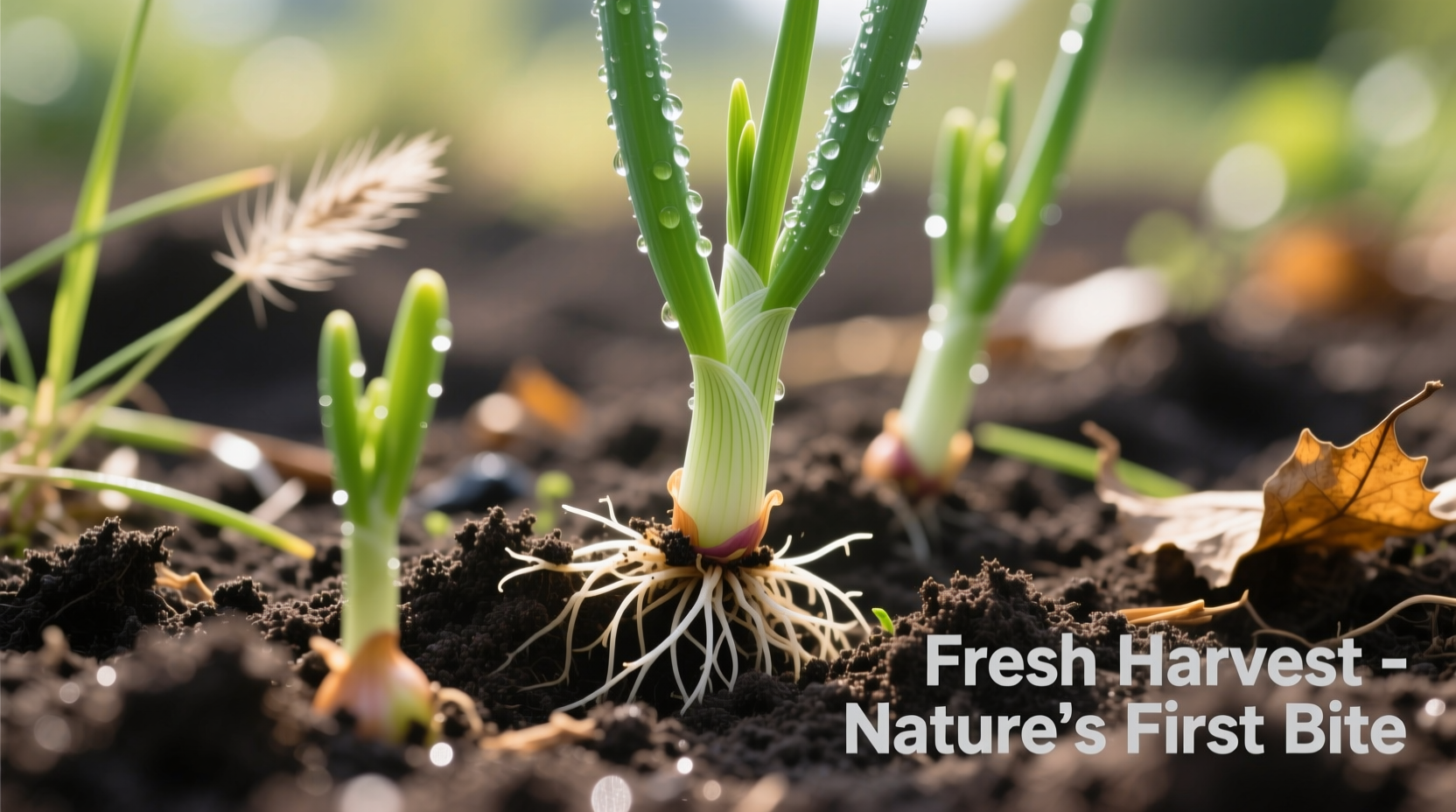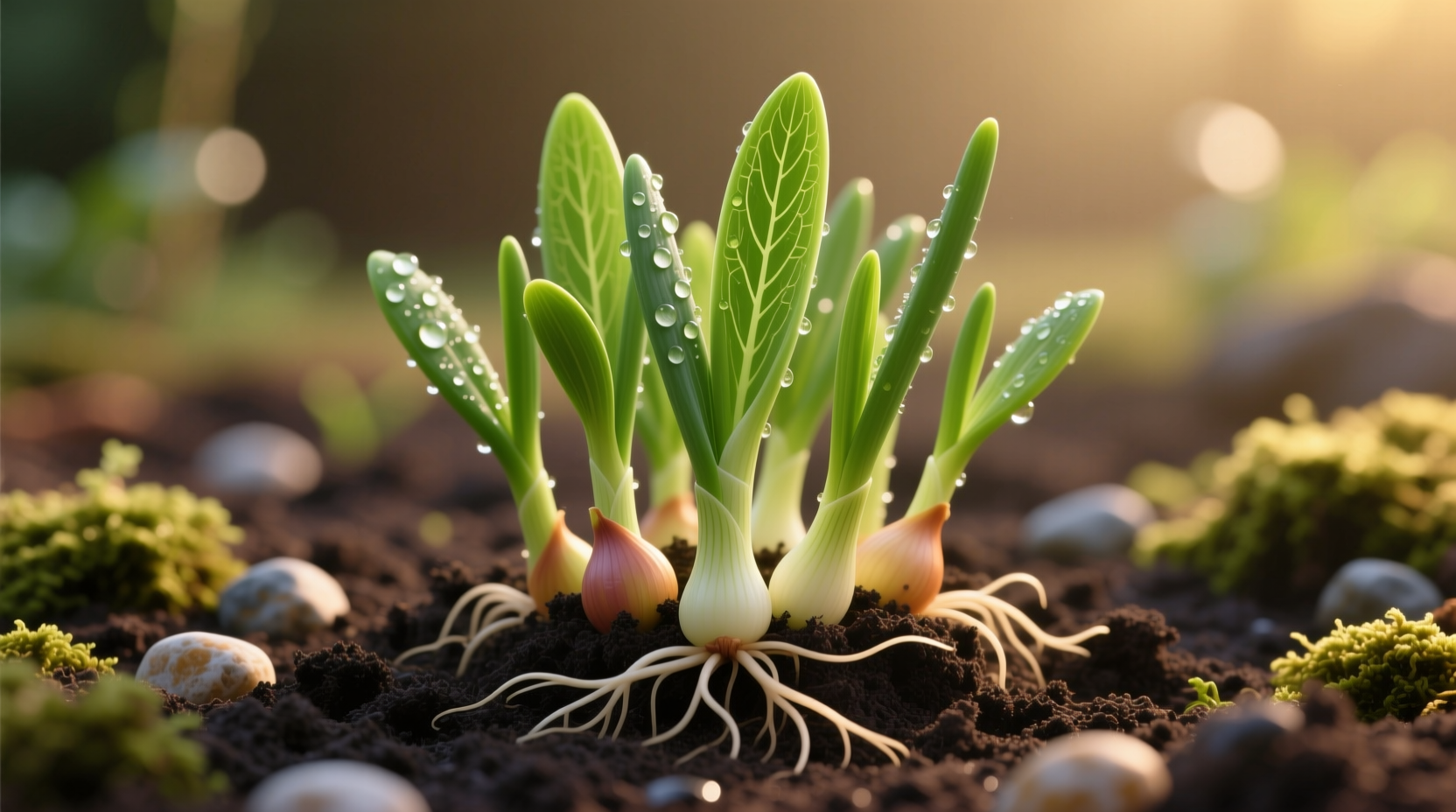What Exactly Are Onion Sprout Plants?
Onion sprouts, often confused with scallions and green onions, represent the earliest growth stage of Allium fistulosum. These slender plants feature hollow green stalks and tiny white roots but never develop the characteristic onion bulb. The confusion in terminology stems from regional naming differences - what many call “onion sprouts” in grocery stores are actually immature bunching onions.

Unlike regular onions (Allium cepa) that divert energy to bulb formation, onion sprout varieties maintain vertical growth. This biological distinction explains their consistent cylindrical shape and absence of the layered structure found in mature onion bulbs. The edible portion consists entirely of the leafy green tops and slender white base.
Growing Onion Sprouts: Your Complete Cultivation Guide
Successfully growing onion sprouts requires minimal space and resources. These hardy plants thrive in USDA zones 3-10 and can be cultivated year-round indoors with proper lighting. The key to optimal growth lies in understanding their specific requirements at each development stage.
| Growth Stage | Timeline | Key Requirements |
|---|---|---|
| Germination | 5-7 days | Soil temperature 60-70°F, consistent moisture |
| Seedling Development | 7-14 days | 6+ hours direct sunlight, thin to 1 inch spacing |
| Harvest Ready | 20-30 days | 6-8 inch height, pencil-thin diameter |
Onion Sprouts vs. Scallions vs. Green Onions: Clearing the Confusion
The terminology surrounding young onion varieties creates widespread misunderstanding. While often used interchangeably, these terms describe distinct plant stages and varieties:
- Onion sprouts: The very first growth from seed (5-10 days), delicate and mild
- Scallions: Immature onions harvested before bulb formation (20-30 days)
- Green onions: Typically refers to Allium fistulosum varieties that never form bulbs
According to the USDA's Agricultural Research Service, true scallions come from Allium cepa varieties harvested early, while green onions belong to the Allium fistulosum species that naturally grows without bulbs. This botanical distinction affects both flavor profile and culinary applications.
Maximizing Culinary Potential
Onion sprouts deliver a delicate onion essence that enhances dishes without overwhelming other flavors. Their culinary versatility spans multiple applications when used at the proper growth stage:
For optimal flavor retention, add sprouts during the final minute of cooking or use raw as garnish. The white base offers slightly more pungency while the green tops provide subtle onion notes with grassy undertones. Professional chefs like Antonio Rodriguez recommend slicing sprouts at a 45-degree angle to maximize surface area for flavor release.
When substituting in recipes, remember that 1 cup of chopped onion sprouts equals approximately 1/4 cup of mature onion. Their high water content (92% according to Cornell University's Food Science Department) makes them excellent for adding moisture without additional liquid in dishes.
Nutritional Powerhouse in Miniature Form
Despite their small size, onion sprouts pack significant nutritional value. A 100g serving provides:
- 107% of daily vitamin K requirement
- 31% of vitamin C needs
- Substantial allicin content (the compound responsible for many onion health benefits)
Research from the Journal of Agricultural and Food Chemistry confirms that young onion varieties contain higher concentrations of certain antioxidants compared to mature bulbs. The sulfur compounds in sprouts support cardiovascular health while being gentler on digestion than fully developed onions.
Troubleshooting Common Growing Challenges
Gardeners often encounter these issues when cultivating onion sprouts:
Yellowing tips: Usually indicates overwatering or nitrogen deficiency. Reduce watering frequency and apply balanced liquid fertilizer every two weeks.
Thin, weak stalks: Results from insufficient light. Provide 12-14 hours of direct sunlight or equivalent artificial lighting.
Purple discoloration: A natural response to temperature fluctuations, not a disease. Maintain consistent temperatures between 60-75°F for optimal growth.
Prevent common pests like thrips by spraying plants with a solution of 1 part milk to 9 parts water weekly. This organic treatment creates an unfavorable environment for pests while providing calcium to strengthen plant cell walls.
Harvesting and Storage Techniques
For continuous harvests, cut sprouts 1 inch above the soil line rather than pulling the entire plant. This “-cut-and-come-again” method yields 3-4 harvests from a single planting. Morning harvesting preserves maximum crispness and flavor.
Store freshly harvested sprouts in a damp paper towel inside a perforated plastic bag in the refrigerator. Properly stored, they maintain quality for 7-10 days. For longer preservation, freeze chopped sprouts in ice cube trays with water or olive oil - though this method works best for cooked applications as texture changes upon thawing.











 浙公网安备
33010002000092号
浙公网安备
33010002000092号 浙B2-20120091-4
浙B2-20120091-4